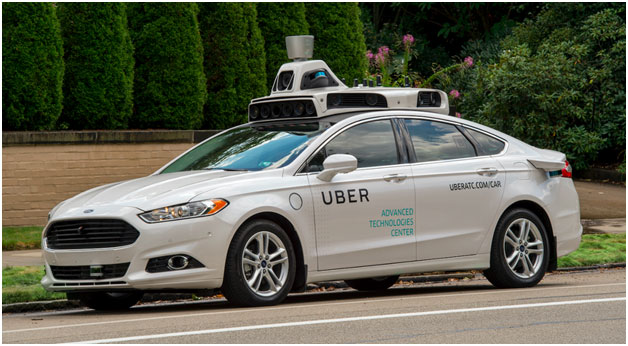
Self-driving cars being vague sign-bearers of an indeterminate future would soon become days of the past. Self-driving cars are all set to disrupt the automobile industry and usher its colossal restructuring. In the coming years, you will just need to turn around to see them moving in your neighboring street.
Self-driving cars have already hit the roads of California, Texas, Arizona, Washington, Pennsylvania, Michigan and other US states and countries. Though, as of now, their mobility is restricted to specific test areas and driving conditions.
But a question arises inescapably in our minds – how do autonomous cars function?
Of course, there are a slew of technologies that enable the vehicle to drive autonomously, but, how do the cars change lane and keep a safe distance from other vehicles hurtling past them, or how do they spot roadblocks and other such obstructions ahead?
Just like human-driven cars, autonomous vehicles too would have to face traffic congestion, potholes, trees and other obstacles on roads. What is the technology that works as an eye of these cars?
LiDAR – eyes of autonomous vehicles
You might have noticed a rotating device installed atop an autonomous vehicle. However, on some, it’s mounted on the bonnet. This device is LiDAR that acts as an eye of the self-driving vehicles. It provides them a 360-degree view of the surrounding helping them to drive themselves safely.
Continuously rotating LiDAR system sends thousands of laser pulses every second. These pulses collide with the surrounding objects and reflect back. The resulting light reflections are then used to create a 3D point cloud. An onboard computer records each laser’s reflection point and translates this rapidly updating point cloud into an animated 3D representation.
The 3D representation monitors the distance between the other passing by vehicle and any other vehicle in front of it. It helps to command the brakes to slow or stop the vehicle. When the road ahead is clear, it also allows the vehicle to speed up.
LiDAR is also being incorporated into a new development called Pre-Scan. In Pre-Scan, laser scans the road surface several hundred times a second. This information is then fed to the cars on-board computer and processed in a fraction of a second, adjusting the individual suspension at each wheel.
With the help of LiDAR, autonomous vehicles travel smoothly and avoid collisions by detecting the obstructions ahead. This improves the safety of the commuters and makes autonomous cars less prone to accidents because the risk of human negligence and rash driving is absent.
Solid-State LIDAR – Affordable alternative to LIDAR
LiDAR is used alongside other sensors such as cameras and RADAR for mapping, object detection and identification, and navigation without relying on lighting conditions.
LiDAR sensors are known to be expensive pieces of equipment, sometimes knocking in at $75,000 per unit, making them somewhat prohibitive and limiting for use en masse (and often, cost even more than the vehicles they’re mounted on!). However, solid-state LiDAR is gaining traction as a promising technology that is cheaper, faster, and provides higher resolution than traditional LiDAR, with predictions the price could eventually fall below $100 per unit.
More economical LiDAR options could accelerate the industries that rely on it, including autonomous vehicles, drone delivery services. It could also impact other areas such as virtual reality.
What is solid state LiDAR?
To explain the difference in technologies, traditional LiDAR systems are electromechanical—they rely on moving parts that have to be precise and accurate in order to obtain measurements suitable for autonomous navigation. These measurements come from photons from a laser, which then reflect back off surfaces and concentrated into a collector that can determine the distances of these objects.
Basically, RADAR but with light. The laser and collector must rotate in order to scan the area around it. The moving parts involved put a restriction on the size of the system, since making them small and compact would increase the difficulties in the precise manufacturing required, which then drives up cost.
Additionally, moving parts mean that it could be susceptible to perturbations, so driving in rough terrain for example could have negative impacts on readings. Despite the high cost, sensitivity to movement, and difficulty to manufacture, LiDAR Is highly useful for creating 3D maps of its surrounding.
Solid state LiDAR on the other hand is a system built entirely on a silicon chip. No moving parts are involved, which not only makes more resilient to vibrations, but can be made smaller much more easily. This lends to production being cheaper.
In order to achieve a scan, solid state LiDAR uses a concept not unlike phased array in radio. In phased array, several transmitters emit in certain patterns and phases to create a directional broadcast. The size, focus, and direction of this broadcast can be changed, without having to physically adjust the transmitters. The very same concept is applied in solid state LiDAR to achieve optical phased array — optical emitters send out bursts of photons in specific patterns and phases to create directional emission, of which the focus and size can be adjusted. Once again, no physical adjustment to the optical emitters need to be made to achieve this, making it resilient to vibrations and more compact. And for the design minded, solid state LiDAR systems so far appear to be more aesthetically appealing.